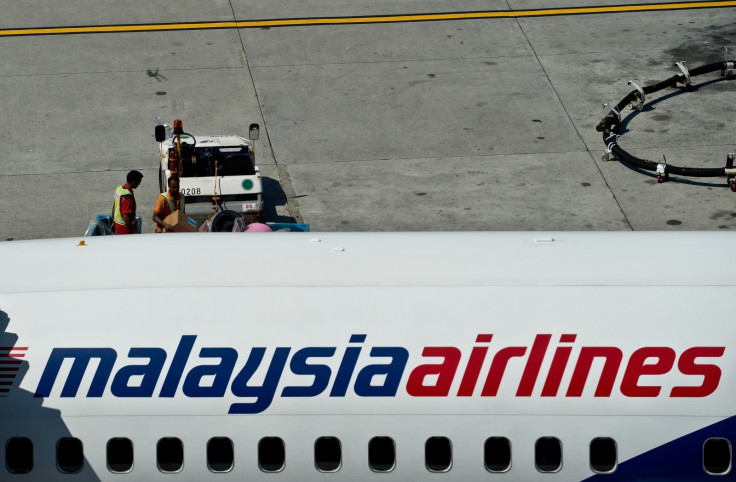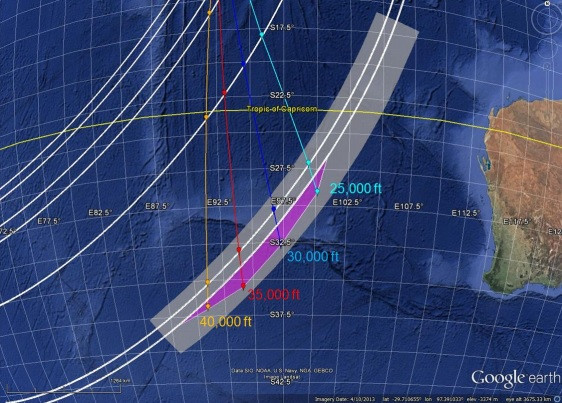Malaysia Airlines MH370: 'Prove to world assumed flight path' says marine surveyor

A marine expert is calling for the Australian authorities to prove their so-called "seventh arc" theory for finding missing MH370 in the Indian Ocean instead of concentrating their efforts on doubling the existing search area.
Mohamed Shareef, from Malaysia, who has 27 years of experience as a seafarer and marine surveyor, believes it is time to "prove to the world the accuracy of the assumed flight path" of the Boeing 777 that disappeared without trace on 8 March 2014. All 239 passengers and crew are presumed dead.
- First handshake (log-on request) initiated by the aircraft 1825.273
- Unanswered ground to air telephone call 1839.524
- 2nd handshake (log-on interrogation) initiated by the ground station 1941.00
- 3rd handshake (log-on interrogation) initiated by the ground station 2041.02
- 4th handshake (log-on interrogation) initiated by the ground station 2141.24
- 5th handshake (log-on interrogation) initiated by the ground station 2241.19
- Unanswered ground to air telephone call 2313.58
- 6th handshake (log-on interrogation) initiated by the ground station 0010.58
- 7th handshake (log-on request) initiated by the aircraft 0019.29
- Failed handshake (log-on interrogation) initiated by the ground station - aircraft did not respond 0115.5 Source: http://www.atsb.gov.au/
Experts have said the latest satellite data from British firm Inmarsat has indicated the so-called seven handshakes that pinpoints the plane in the southern Indian Ocean (after the plane lost radar contact and veered off its original course from Kuala Lumpur to Beijing) but Shareef said the theory needs to be reviewed as it is not 100% accurate to work out distance and position using Inmarsat radio signals.
The 45-year-old is now calling on the Australian Transport Safety Bureau (ATSB) to prove its theory works by sending a plane along the assumed calculated flight path.
It comes as Malaysian Transport Minister Liow Tiong Lai announced the current 60,000 sq km search, led by the ATSB and Joint Agency Coordination Centre, will be doubled by the end of May if the aircraft is still not discovered.
Shareef told IBTimes UK: "Doubling the search might make sense but they have identified or assumed a location based on what they have calculated, what is called the Inmarsat handshakes.
"When they did that calculation, it was according to the latest report from the underwater search area by the ATSB. They clearly mentioned they used similar kind of aircraft and 80 other commercial planes using the similar terminal communication on board the aircraft.
"The flights that they have taken to form the so-called seventh arc were continuously logged into the system and it was going along the route and they took their readings for comparison, which is understood, but the case of MH370 it is different, it was not continually logged into the system and no one knows whether it maintained its altitude.

"Based on those little signals what I'm arguing is that if you have calculated something why not send a real plane on the assumed calculated flight path to check you are right, which would allow us to come closer to the truth. To my knowledge there is no proven theory to work out a distance or position using Inmarsat signals."
Shereef also said to pinpoint the debris of the plane, oceangraphers should start locating it based on choosing a position like somewhere close to Antartica or south east of Maldives, which would be too far for any debris to be washed ashore to an inhabited place within a year.
He added: "This might also give a clue of the whereabouts."
Inmarsat satellite data was picked shortly after the plane lost contact with ground control less than an hour after take-off on March 8, 2014. No distress signal was sent. The last ACARS, (Aircraft and Communications Addressing and Reporting System) transmission was sent at 1.07am via the plane's computers to computers on the ground. It was believed the plane's transponder, which emits an identifying signal was "deliberately disabled" before the plane changed course and continued flying for a further seven hours until it is believed it crashed into the Indian Ocean. It remains one of the aviation industry's biggest mysteries.
© Copyright IBTimes 2025. All rights reserved.






















